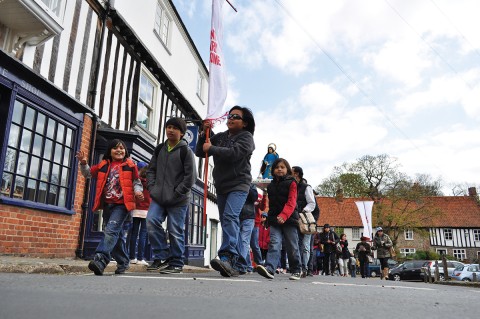The global church in an English village
The Londoners who come to Aylesford as pilgrims are an impressively polychrome microcosm of Christianity.

I once suggested that if the Roman Catholic Church ever chose a single motto, an excellent candidate might be Iter semper (always traveling). That is particularly true today, when the church in Europe is passing through so many crises and yet is being constantly revived and strengthened by new arrivals.
As one representative illustration, look at the popular English pilgrimage site of Aylesford, in Kent. There, in 1240, English Christians imported the Carmelite tradition from the Holy Land and established a house in that order. Aylesford was, in a sense, an immigrant foundation. An early prior was Simon Stock, who became a venerated saint. After centuries of secular use, the house once again became a pilgrimage destination in the 1950s, at first on a limited scale. The real explosion came at the end of the century, when Aylesford started attracting crowds drawn chiefly from newer ethnic and immigrant groups from the Greater London area.
During one of the many pilgrimages in any given year, Aylesford looks like an impressively polychrome microcosm of the universal church. Among the many specialized events held in 2020 were gatherings intended for Indians (with separate days set aside for Tamils, Goans, and Keralans), as well as Nigerians, Brazilians, Italians, Portuguese, and Poles. A generic Caribbean event is one of the most popular. The faithful can incorporate several historic shrines in a substantial walk through Kent, the Augustine Camino, named for the celebrated Spanish route to Santiago.





